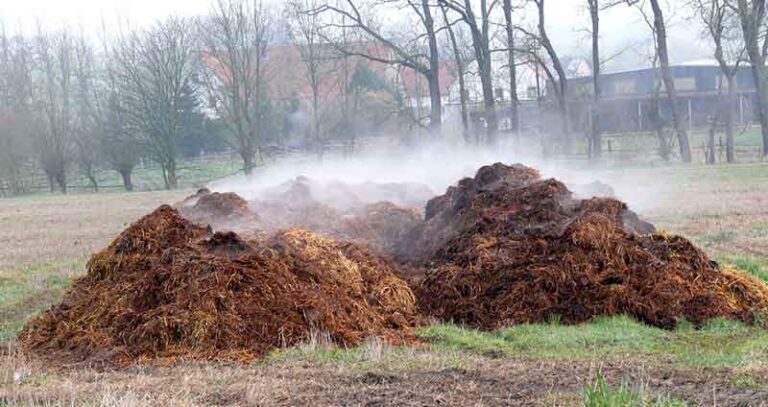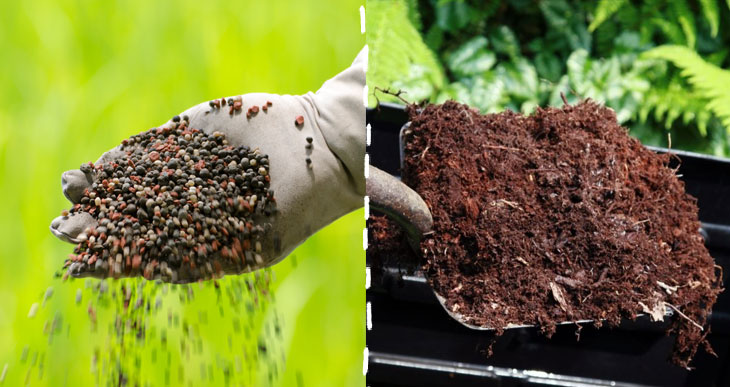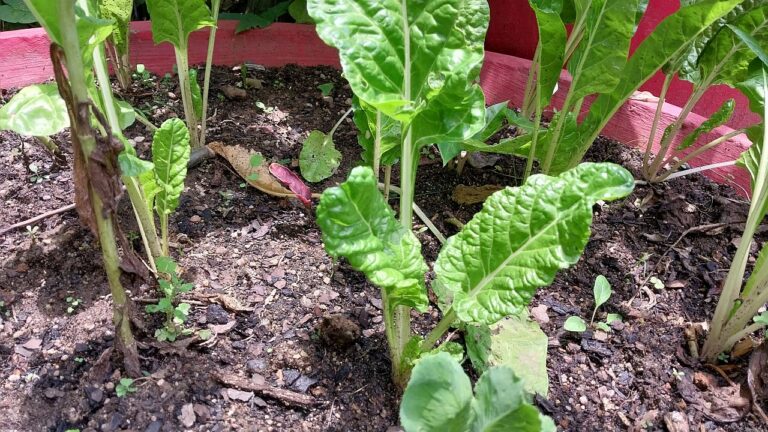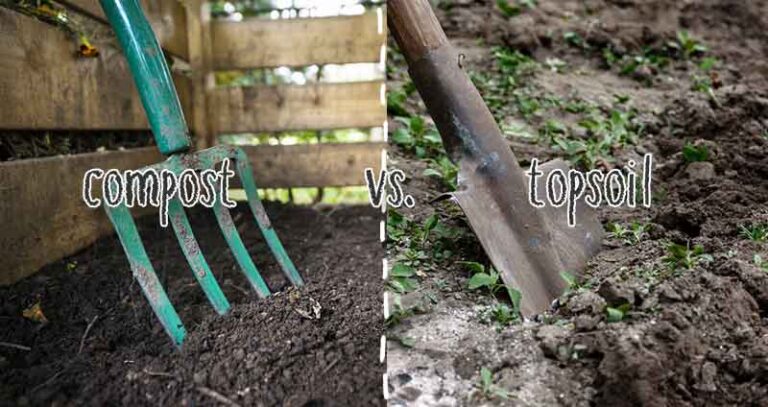Can I Use Compost As Potting Soil? (Explained!)

Most gardeners understand the value of compost as a soil amendment.
It’s an excellent source of plant nutrients and can even be used as mulch.
So given the benefits of compost, can you use it as a replacement for potting soil and plant directly into compost?
It sounds like a perfectly reasonable thing to do… Right?
Can You Use Compost Instead Of Potting Soil
Compost can be used as potting soil under certain conditions, but it has to be done right to achieve success. Gardeners need to understand the differences between these two substances before planting directly in compost. In general, it is not a good idea to plant straight in compost.
Many gardeners I meet do not fully understand the makeup and composition of compost. Unfortunately, this leads them to think that planting in pure compost benefits their plants.
It’s true… Compost is regarded as “black gold” and is a highly sought-after substance. (i can’t get enough!)
After all, compost provides the correct drainage and water retention level and offers plants nutrients, beneficial microbes, and fungi all in one substance!
But these benefits can be misleading. Gardeners get the impression that it’s OK to plant straight into compost and use it as an alternative growing medium to potting soil.
Don’t get me wrong… Planting in compost can be done, but you must do it correctly to succeed.
Let’s take a closer look at the differences in compost vs. potting soil composition. Then, you’ll understand why planting in pure compost is generally not a good idea.
What Are The Main Differences Between Potting Soil And Compost?
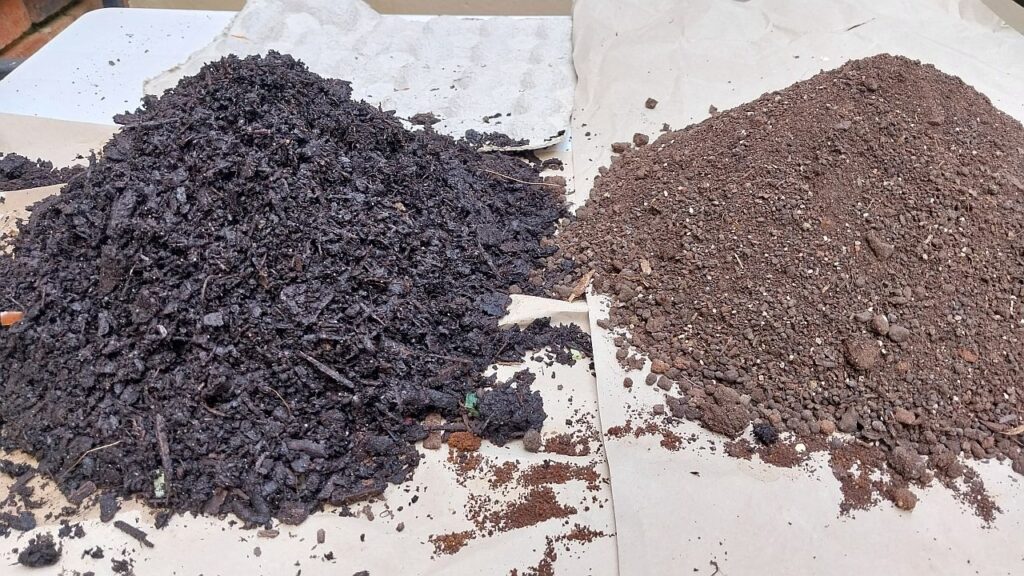
Firstly, we need to draw several distinctions between compost, potting soil, and potting mix. Potting mix is not potting soil, but the term potting mix is often used interchangeably with potting soil among gardeners.
What Is Potting Soil?
Potting soil is designed to grow plants in containers or pots and provide a balance of water retention and drainage. It also gives the plants an excellent rooting medium and a certain level of nutrients.
Potting soil is not as nutrient-dense as compost because it is a mixture of materials. Potting soil usually contains the following mix of ingredients.
- Topsoil. Topsoil provides plants an enhanced rooting medium and minerals, salts, and trace elements not found in compost.
- Compost. Potting soil can contain compost which adds drainage, water retention, aeration, nutrients, and microorganisms.
- Inorganic substances. Perlite or vermiculite may be included to improve drainage.
- Peat moss. Many potting soils use peat moss to adjust the soil pH, increase water retention, and add supplemental rooting medium for the plants.
- Fertilizer. Some potting soils have a slow-release fertilizer added to improve nutrient availability to the plants over a long time.
What Is Potting Mix?
Potting mix is a growing medium that is designed for specific plant types. For example, you often find potting mixes labeled “orchid potting mix” or “rose potting mix.” These potting mixes are crafted to contain the perfect growing medium for these particular plants.
The defining difference between potting soil and potting mix is that potting mix does not contain compost and is sterile. Compost is not included in potting mix because it contains good and bad bacteria, fungi, and other microorganisms that can sometimes introduce disease to the growing medium. (This is particularly true if the compost is not mature or hasn’t been sterilized)
The potting mix is usually actively sterilized to ensure no microorganisms are present in the medium, which could introduce detrimental microbes.

Young plants and seedlings are particularly sensitive. Immature compost or compost that hasn’t reached sufficiently high temperatures to kill pathogens is a risk for this type of plant. Hence the use of sterilized substances in the mixture.
The potting mix usually contains sterilized topsoil and commercial fertilizers to provide nutrients for the plants and inorganic materials such as vermiculite or perlite for improved drainage and water retention.
What Is Compost?
In contrast to potting soil and potting mix, compost is composed of decomposed organic matter.
Compost is rich in nutrients but also contains a hefty dose of beneficial microbes, fungi, and bacteria. It is made up entirely of organic matter, so the concentration of nutrients can be strong. Even though well-matured compost may have a similar texture to soil, it does not contain soil.
Planting In Compost Without Soil
Now that you’ve read about the essential differences between potting soil and compost, the question remains whether plants can be grown directly in compost.
Seeds can be started directly in compost if the correct type of compost is used and the process is managed correctly.
There are some risks associated with planting directly in compost, including the following.
- Pathogens. While compost includes many benefits and helpful microorganisms for plants, it can also contain disease-bearing microbes and bacteria that inhibit seed germination or kill seedlings.
- Lack of nutrients. Decomposing microbes use nitrogen to break down brown or woody components in the compost. This can lock up nitrogen and other nutrients in compost that has not fully decayed, starving the plant of nitrogen.
- Compaction. As the compost decays, it will become compacted, making it difficult for seedlings to push roots through the medium and reduce the available oxygen to the roots.
- Anaerobic environment. If the compost becomes compacted and soggy, it creates an anaerobic environment that can starve the roots of oxygen and release organic acids and other compounds toxic to plants.
Most of these issues can be overcome by careful compost selection, correct compost processing, and proper maintenance after planting.
Seeds and seedlings are more delicate than established plants, requiring special care when preparing the compost as a planting medium.
I have successfully grown plants directly in compost many times. Still, a few critical considerations generally determine the success of the process.
- Use mature compost. Mature compost has more available nutrients than incomplete compost.
- Remove large compost particles. Sieve or screen the compost using a compost screen to remove large clumps of compost that can potentially create an anaerobic environment or hinder root penetration.
- Don’t overwater. Overwatering compost will remove the oxygen in the medium and result in an anaerobic environment that can starve the plant of oxygen and release acids and toxins.
When planting seeds straight into compost, do not plant the seeds too deep. After planting, moisten the compost, but do not make it soggy. Keep the container out of direct sunlight to prevent drying, and do not water the seeds again until the seeds have sprouted.
The initial watering penetrates the outer layer of the seeds and initiates the germination process. The seedlings will survive using nutrients from within the seed for about a week after germination. Do not fertilize or water the seedlings until the compost feels dry 1-inch down.
Once the seedlings are well established, you can continue water, but take care not to overwater the compost causing it to become soggy.
Compost or potting soil – Which one to use?
Many people consider using compost instead of potting soil because compost is cheaper, especially if you make your own compost at home!
But as you can see, there are risks to growing in compost alone, which may cause difficulty for inexperienced gardeners.
If you have an abundance of compost, the best option is to create your own potting soil, integrating your well-matured compost with topsoil and perlite. Just make sure your homemade compost is sieved to remove large particles 🙂


